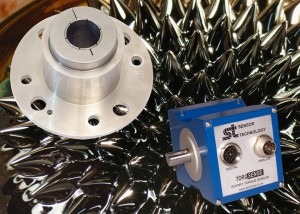
A non-contact torque monitoring system that could guarantee an infinite lightness of touch has proven to be the only way to test the seals of super high performance vacuum systems
The ultimate fields of precision manufacture, such as electronics, biophysics and thin film deposition where tolerances are measured in atoms, are often conducted in hard vacuum to remove airborne contaminants and avoid the performance reducing effects of tiny air movements.
However the vast majority of vacuum chamber designs require seals for rotary drive shafts and 'feedthroughs' for the passage of materials, components, tools and finished products.
In high vacuum applications conventional seals are unlikely to be able to achieve the performance specifications required, so magnetic fluid seals are used.
A ferrofluid is a stable colloidal suspension of sub-domain magnetic nano particles in a liquid carrier.
The particles, which have an average size of about 100A (10nm), are coated with a stabilising dispersing agent (surfactant) which prevents particle agglomeration even when a strong magnetic field gradient is applied to the ferrofluid.
With over thirty years of experience producing seals for the world's most demanding applications, Ferrotec of Woolwich in London is able to optimise ferrofluid materials for the most intense performance requirements and incorporate them into bespoke vacuum system designs.
"About half of our work is to bespoke design," says Jeff Lewcock of Ferrotec, "and we have to test every seal to the nth degree to meet out customers needs.
"Basically we build the seal, mount it on a bearing of known, and very very low drag, and use it to seal a test chamber which we fill with helium.
"Over the course of a prolonged test we monitor for helium loss through the seal".
As part of the test the starting and running torque of the seal are measured and the power loss through the seal is calculated.
These readings allow Ferrotec to troubleshoot the individual seal, analyse the design's performance and add to the ferrofluids knowledge bank".
"With the sort of tolerances we work to a torques sensor that touches the seal adds far too much drag to the seal, so we were delighted to discover Sensor Technology's non-contact Torqsense," says Lewcock.
With Torqsense a tiny piezo comb is glued to the seal and supplied with power via a radio signal.
The comb 'opens up' as the seal rotates faster, changing its electrical resistance.
Thus, the frequency of the returning radio signal is an indication of the torque within the seal.
Because it is non-contact the Torqsense exerts no drag on the test piece whatsoever, making it an ideal solution for Ferrotec's needs.

